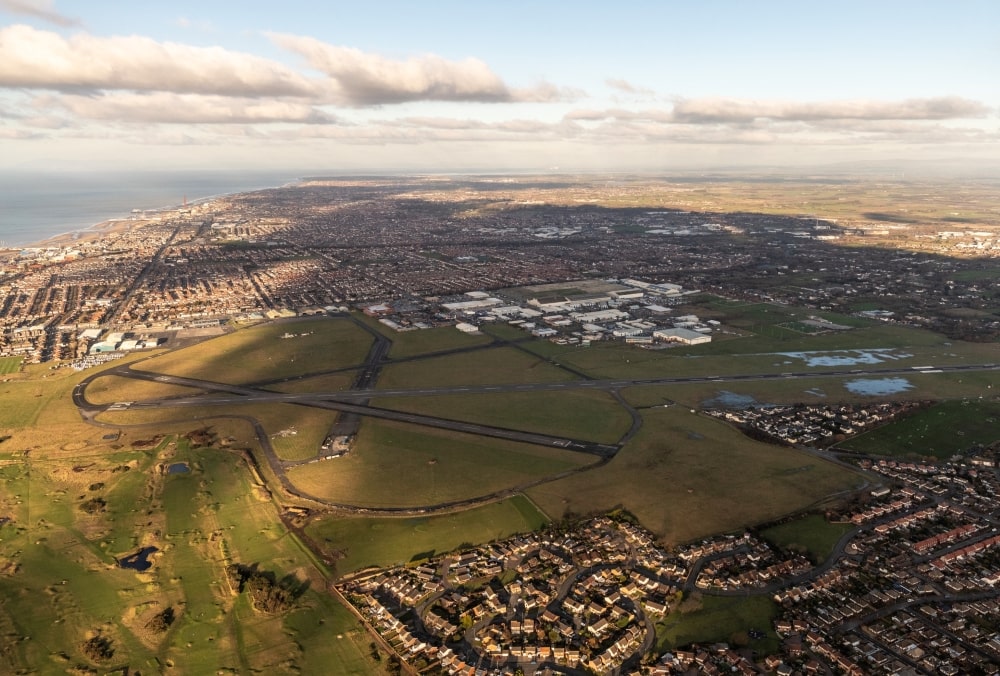Solar farm plans for Blackpool Airport would 'make best use of land'
It would generate enough power to enable Blackpool Council to reduce its overall net electricity consumption by up to 75 per cent.
Planning documents have been submitted to build a solar farm at Blackpool Airport but the scheme would mean the loss of one of the airport’s runways if it goes ahead.
The scheme to develop 25 hectares of land south of the main runway would help the airport reduce its energy bills while supporting wider development plans.
These require the closure of the smaller of the two runways, but just four per cent of aircraft used the smaller 13/31 crosswind runway in 2023.
Steve Peters, managing director of Blackpool Airport, said the bigger main runway was capable of handling all the airport’s flights and was more efficient to operate.
He said: “Runway 28/10 at 1,800 metres long provides good capability for a busy airport which handles around 40,000 flight movements per year, and this move would support our wider plans to improve the airport even further in the coming years.”
The power generated from the 20MVA solar farm would also help equip Blackpool Airport to support the next generation of sustainable hybrid/electric battery-powered aircraft.
Screening documents have been submitted to Fylde Council for the solar farm, which it is hoped could be operational by the end of this decade.
It would generate enough power to enable Blackpool Council to reduce its overall net electricity consumption by up to 75 per cent.
Additional renewable energy would also support plans for the Silicon Sands data centre campus north of the current airfield, which aims to use waste energy to generate heat.
Coun Jane Hugo, cabinet member for climate change at Blackpool Council, said: “These solar farm proposals would allow us to generate our own green energy, reducing our carbon emissions and energy bills considerably.
“It will also help support our plans to grow the local economy, by providing green energy to data centres and businesses at Silicon Sands, as well as helping the airport to explore the next generation of sustainable aviation.”
The council, which owns the airport, says runway 13/31 which is facing closure, costs “significantly” more to maintain than it generates in aeronautical and commercial revenue. Plans for new hangars and aviation facilities closer to the runway would also mean it closing in future years.
Mr Peters added: “This is an opportunity for the airport to make best use of the land by repurposing it so that it creates a revenue stream for the airport while reducing our energy bills and supporting our 10-year plan to become more financially sustainable.
“Installing solar farms at airports is increasingly common, with operational farms at Gatwick, Belfast, Southend, Newquay and plans for more at Edinburgh, Glasgow and other airports in the UK and across the world.”
A buffer zone of trees and landscaping would be designed around the southern edge of the solar farm where it meets properties around Leach Lane in St Annes.
There's lots of ways you can support our work as The Blackpool Lead, from a one-off donation, to a monthly payment through to shopping for The Lead branded merchandise too. It all helps support our independent, in-depth, journalism.
The Blackpool Lead is now on Substack.
Become a Member, and get our most groundbreaking content first. Become a Founder, and join the newsroom’s internal conversation - meet the writers, the editors and more.




